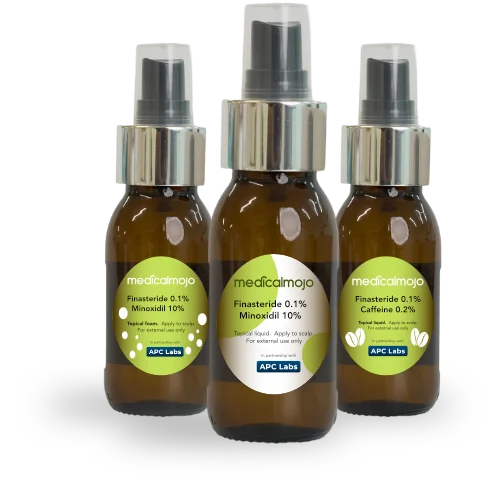In 1965, the pharmaceutical company Upjohn, which now is part of Pfizer, discovered that a derivative of piperidino-pyrimidine was a powerful vasodilator in dogs. This ability to cause the widening or opening up of blood vessels made it a lucrative addition to the arsenal of drugs used to treat hypertension. This is how minoxidil began its career in the drug industry, as an antihypertensive.
The birth of Loniten
The plan was to use the newly discovered minoxidil to treat refractory hypertension, which is defined as blood pressure that had remained uncontrolled after three or more visits to a doctor within six months. It was marketed as a hypertensive treatment of last resort when all else failed (Acelajado et al 2013). The drug developers gained a patent for their new antihypertensive and called it Loniten.
Pharmacovigilance of minoxidil
Once a drug is introduced onto the market, there is a period of time when it is closely monitored for adverse effects. This increased level of scrutiny is known as pharmacovigilance. It is an essential component of the drug licensing process to ensure that any dangerous side effects are identified early, or any new more profitable applications of the drug are likewise discovered. Which in the case of minoxidil caused the company to pivot away from hypertension to a more lucrative arena.
Hypertrichosis, the side effect of minoxidil
With the widespread introduction of minoxidil, researchers started to notice strange side effects. They began to notice cases of hypertrichosis or Ambras syndrome, or to use a more politically incorrect name, “Werewolf Syndrome” (if there are any fans of Father Ted they will be familiar with this condition…. Father Jack developed this syndrome in the episode when he was replaced by the priest who was a fan of jungle music).
Ambras Syndrome and minoxidil
This serendipitous discovery of hypertrichosis or the Ambras syndrome when using minoxidil (Zappacosta, A.R., 1980) opened the doors for more researchers to work on the elusive cure for “baldness”. Guinter Kahn and his colleague Paul J Grant started to work on testing subjects with a minoxidil 1% solution while other physicians started to prescribe Loniten “off-label” for use as a hair loss remedy.
Minoxidil use in androgenetic alopecia
The side effect of hypertrichosis fortunately caused the growth of hair mainly on the head. In these cases, the side effect was warmly welcomed. However, in a few cases, the hair growth was triggered in other parts of the body such as the arms, back and chest. As a result of this unexpected side effect researchers all over the world began experimenting with the minoxidil and found that it demonstrated impressive hair growth, especially in conditions such as androgenetic alopecia (male pattern baldness) and alopecia areata.
Rogaine and Regaine
The work of the researchers eventually bore fruit with the formulation of a topical minoxidil solution for the treatment of androgenetic alopecia in men, with the license later being extended to include women. Initially, a 2% minoxidil solution was marketed to stimulate hair regrowth in men in 1986 in the USA with the 5% solution making its appearance in 1993 Messenger & Rundegren, 2004). Finally, in 1986 the US FDA approved Rogaine topical lotion for the treatment of genetic hair loss. In the UK we know this product as Regaine and eventually, both would move from the prescription-only status to the less restrictive over-the-counter form in 1995.
Regaine, minoxidil 2% and 5%
Once the patent for Rogaine expired it allowed other cheaper generic and compounded versions to enter the market. In the UK Regaine is available for hair loss for both men and women and is available in two different strengths, 2% and 5% with the lower strength usually recommended for women.
Lower-strength minoxidil recommended for women
The reason that a lower strength was initially recommended for women was that it was found that they were more susceptible to other side effects of minoxidil. These included a significant reductions in blood pressure causing light headiness or dizziness.
Regaine side effects, dermatitis
Other side effects that were experienced more so by women included allergic reactions such as dermatitis. It is interesting to note that women generally tend to have a more robust immune system than men. It seems that nature has decided that the female species is more valuable than the superfluous males and thus has given it a weaker immune system. It seems that nature somehow knew men would engage in perilous activities to impress their friends on a Friday night and thus thought an efficient immune system would be wasted on them. However, there is no such thing as a free lunch, one consequence of this superior immune system is an increased risk of allergies and autoimmune conditions, which is when the immune system starts to attack the body when it has nothing to do.
Unwanted hair growth in women after using minoxidil
So, for these reasons, it was recommended that the 2% minoxidil solution should be used by women. Another unfortunate consequence when using minoxidil was that if it ran down the temples it could encourage facial hair growth, which would not be wanted in women. However, it was found that this problem usually resolved itself once the women stopped using the solution (Peluso, A.M., Misciali, C 1997). It was also found that the growth of facial hair in women occurred more frequently when the 5% solution was used.
Minoxidil foam dispenser
The development of a foam dispenser has made the application of minoxidil easier without any solution running down the sides of the temple. Also, the growth of unwanted hair can be mitigated by using a lower concentration of the minoxidil solution.
Minoxidil solution, propylene glycol and allergic dermatitis
With regards to allergic dermatitis, which has previously been mentioned, this manifests itself as itching, burning, the appearance of papules or pustules, scalp tension, scalp pain, scaling or seborrheic dermatitis-like symptoms. However, the true allergy is usually associated with the propylene glycol found in the topical solution preparations. The content of the propylene glycol is greater in the 5% solution than in the 2% solution. Hence, switching to lower concentrations can sometimes alleviate the severity of the allergic response (Rogers, N.E. and Avram, M.R., 2008). The other way to mitigate the effects of propylene glycol allergy is to use the foam preparation. This is one of the reasons that we at Medicalmojo.co.uk advocate the use of the foam solution when there is an allergic response to the hair solution. In other rare instances, there is an allergic reaction to the minoxidil itself.
Study finds minoxidil 5% produced better results than minoxidil 2%
A landmark study by Lucky et al (2004) found that the use of the 5% solution produced better results than the 2% minoxidil solution in a cohort of women suffering from androgenetic alopecia or female pattern hair loss. Both strengths were equally well tolerated and as a result minoxidil 5% foam became available for use in women.
Compounded minoxidil
Minoxidil has now become firmly established in the treatment of hair loss and is included in many of the preparations we now offer at Medicalmojo.co.uk. Medical Mojo has teamed up with the compounding pharmacy, APC Labs, to develop hair loss combination products such as Finasteride 0.1% Minoxidil 5% hair loss solution and foam, Finasteride 0.1% Minoxidil 10% hair loss solution and foam. You can learn more about the role of DHT blockers, such as finasteride and dutasteride, and hair loss in our blogs on Mojo Guide. If you do not see the strength you require or want to try a combination of hair loss ingredients that is not available on the market please contact us and we will see if can formulate an original solution for just for you.

References:
- Acelajado, M.C., Pisoni, R., Dudenbostel, T., Dell’Italia, L.J., Cartmill, F., Zhang, B., Cofield, S.S., Oparil, S. and Calhoun, D.A., Refractory hypertension: definition, prevalence, and patient characteristics. The Journal of Clinical Hypertension, 14(1), pp.7-12.
- Messenger, A.G. and Rundegren, J., 2004. Minoxidil: mechanisms of action on hair growth. British Journal of Dermatology, 150(2), pp.186-194.
- Peluso, A.M., Misciali, C., Vincenzi, C. and Tosti, A., 1997. Diffuse hypertrichosis during treatment with 5% topical minoxidil. British Journal of Dermatology, 136(1), pp.118-120.
- Rogers, N.E. and Avram, M.R., 2008. Medical treatments for male and female pattern hair loss. Journal of the American Academy of Dermatology, 59(4), pp.547-566.
- Zappacosta, A.R., 1980. Reversal of baldness in a patientreceiving minoxidil for hypertension. The New England Journal of medicine, 303(25), pp.1480-1481.


